As mentioned in the last post I spent much of 2011 – 2012 in Zaranj, the Capitol of Nimroz Province. Nimroz is in southwestern Afghanistan bordersing Iran to the west, Baluchistan in the south, Helmand province in the east, and Farah province in the north. The province is divided geographically and demographically with the four southwestern districts; Kang, Charborjak, Zaranj and Chakansor comprised of flat desert terrain inhabited mostly by Baluch people and the mountainous Northwestern district of Khashrud which has a majority Pashtun population. Nimroz is the only province in Afghanistan where the minority Baloch make up most of the population, and the capital, Zaranj is one of the few cities in Afghanistan where the women wear the Persian black chador instead of the blue Afghan burqa.
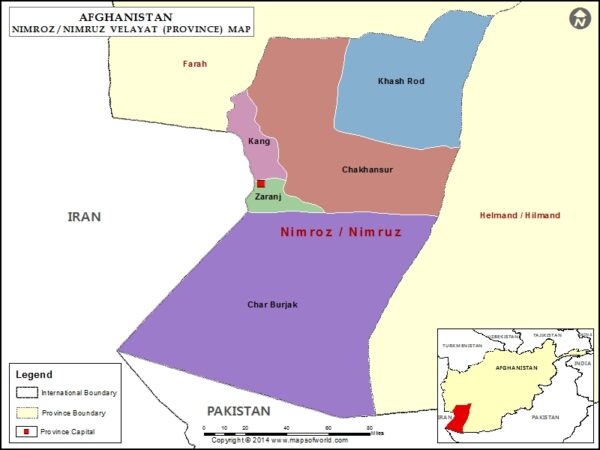
Zaranj was essentially isolated from the rest of the country by the Dash-e Margo (Desert of Death) until the Indian government paved a high-speed highway connecting Zaranj to the ring road at Delaram in 2009. Known as route 606 the road connected to the deep-water port of Chabahar, Iran which the Marines and Afghans hoped would stimulate more economic growth, but that growth needed to be juiced with reconstruction money. In 2009 the Boss sent Mullah Jack Binns who was now working with us to Zaranj to find a guesthouse and to get some projects started. Jack had managed the Jalalabad Afghanistan NGO Security Office (ANSO) the year prior and deployed to Afghanistan with the Canadian Army prior to that. We would be the only USAID implementor to work in Nimroz province for the remainder of the war.
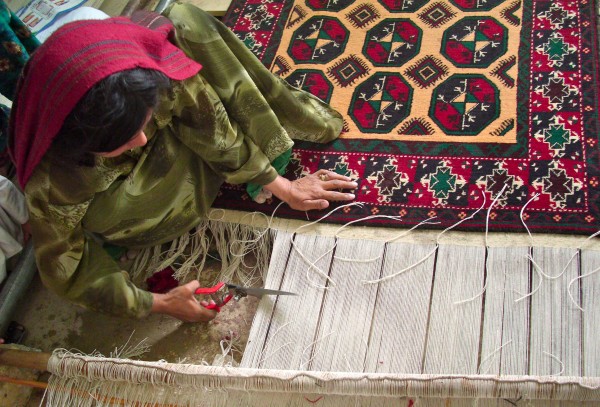
Due to its desert terrain and agricultural economy, Nimroz province was completely dependent on large-scale irrigation from rivers. With it, the soil is highly productive and can sustain a large population and large hydraulic civilizations had thrived in the area thousand years ago until Genghis Khan showed up to prove you can win a counterinsurgency by killing people, something today’s military leaders say is impossible to do.
Desert canals require regular large-scale centrally coordinated maintenance efforts; otherwise they fill in with silt from the constant dust storms and canal-bank erosion. A positive feedback loop forms, as the topsoil of newly fallow land is blown into the neighboring canals and blocks them. Over the last thirty years of war and weak government, blocked canals and lack of irrigation led to the depopulation of the province. Our plan was to rebuild the irrigation systems in the Baloch dominated districts while ignoring the Pashtuns in Khashrud district because, being the only people working in Nimroz we could get away with that kind of thing.
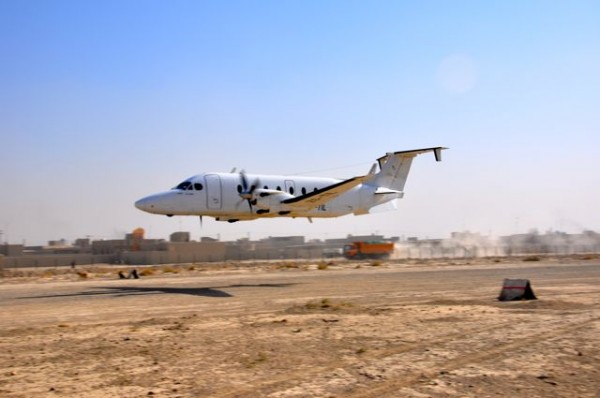
I was a big fan of the governor of Nimroz, Abdul Karim Brahui. Governor Brahui was a graduate of the Kabul military academy who founded and commanded the Jabha-e Nimruz (Nimroz Front) as part of the Mujahedeen Southern Alliance against both the Soviet army and Taliban. He was a lead-from-the-front commander and the rare Afghan politician who concerned himself more with the people’s problems than accumulating additional power and wealth.
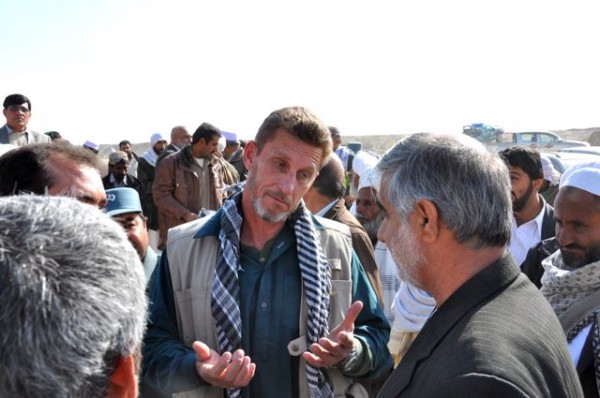
Governor Brahui was as close to an honest politician as one could be in Zaranj given that the local economy revolved around plastic jerry cans. They were used to smuggle petrol or heroin across the border or to haul water from various sources for sale to one of the two municipal water treatment plants. Teenage boys selling petrol or diesel out of 5-gallon jerry cans dotted every major road in the city. There was very little industry and as the population swelled with refugees returning from Iran, drinking water became a huge issue.

In 2010 I routed my fiscal year plans through the Marines in Leatherneck because Nimroz was the one province in the country without a PRT. I told the Marines that we were going to completely rehabilitate the irrigation systems in Charborjak, Kang, and Chakhansor districts they did not believe we could do it in just one year. The were technically correct because Miullah John had started work on the Chakhansor district system with FY 2009 funds but we finished the rest on time which was still impressive given the size, scope and distances involved.
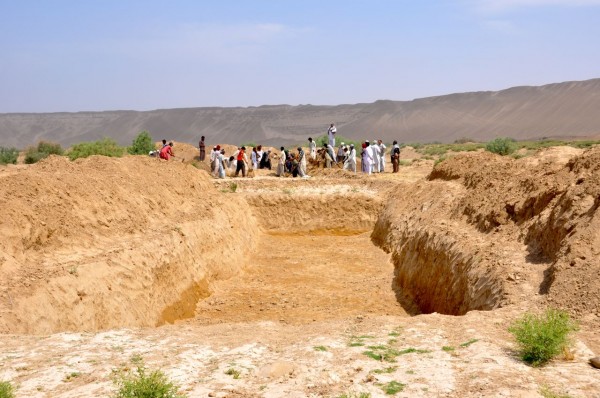
The easiest and fastest project was the Chakhansor district system because the Khashrod River which fed the irrigation system was dry for most of the year. Using 1,500 local laborers we rehabilitated 300 kilometers of canals and re-built a 170 meter, reinforced concrete check-dam to capture the spring run-off. The Chakhansor irrigation system served 7,200 farms and the first post project wheat and melon harvests yielded outputs three times greater than pre-project averages. The Baloch of Nimroz no longer had to import melons from Kandahar and if you knew how much Afghans love their local melons (which are excellent) you would understand the significance of that accomplishment, and we weren’t even getting started.
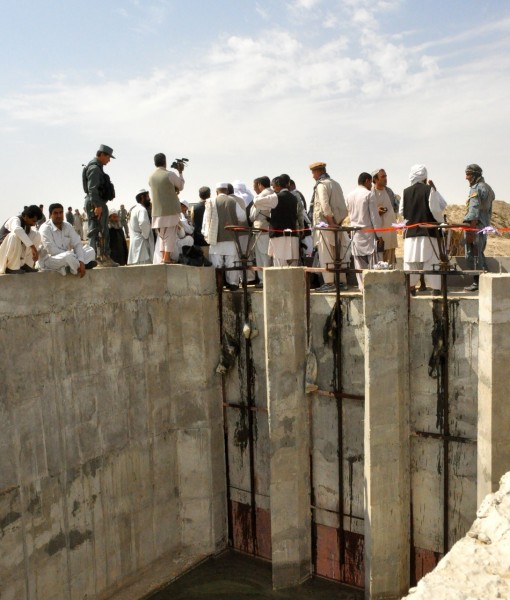
The Chakhansor district project was completed by Mullah John while I was still in Jalalabad. With the large fiscal year 2010 budget we could do both Charborjak and Kang districts simultaneously which would mitigate some of the heavy equipment costs. That year we built 400 miles of irrigation canals turning 25,000 acres of the Dasht-e Margo into highly productive farmland allowing the Baloch to get in on the poppy boom. We hired over 18,000 workers to dig these canals in the middle of the desert where the temperature could hit 120° daily.
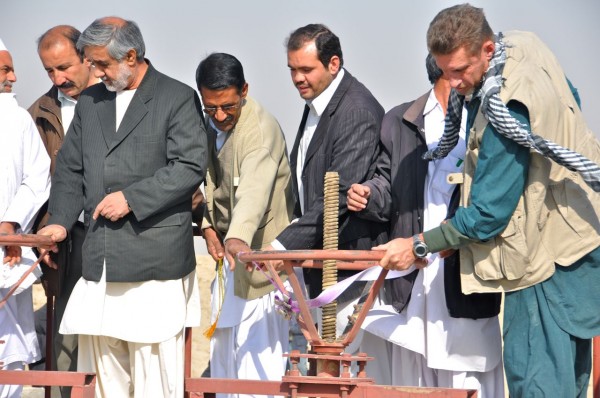
The key to completing these so quickly was we were replacing systems, not building new ones, and we hired as many of the engineers who had built the original weirs and dams as we could find. The only problem with this massive project was the USAID stipulation that no material originating from Iran could be used in the construction. Instead of using high quality Iranian concrete at $5.00 per 50lb bag we were supposed to import low quality concrete from Pakistan who the State Department insisted was our ally. We worked around that somehow, I don’t remember the details, and finished every project on time and on budget. You can read about those in more detail as well as the Taliban attempt to ambush us here, here and here.
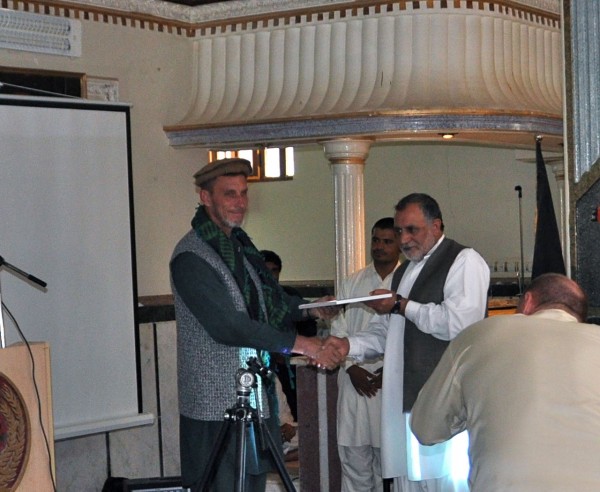
From the time of my first visit to Zaranj in 2010 until I departed the city in 2012 I would tell anyone who asked the city was perfectly safe. I once even lectured the G9 about the requirement to drive around the city in unarmored trucks like the Afghans did because the Baloch held the city and they were not down with the Pashtun dominated Taliban. I often walked around the city of Zaranj alone to inspect our road and stadium building projects because I knew I was safe, protected by locals who respected me because I lived like them, ate with them, and really liked them. It did not take long before I saw the Marines riding around in the back of ANP trucks which I thought a splendid idea.
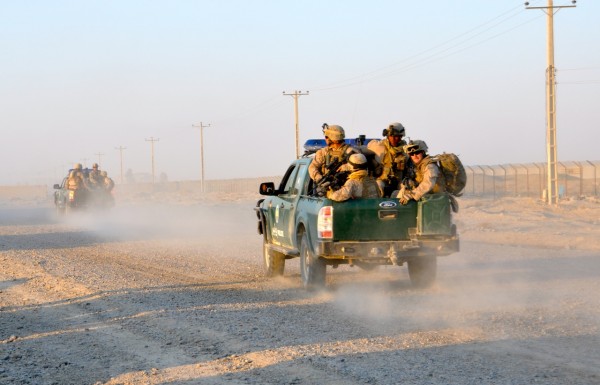
April 28th, 2012 a four vehicle patrol of ANP trucks with Marines and a Wall Street Journal reporter in the back were hit by a suicide bomber in downtown Zaranj. The attacked killed 38 year old MSgt Scott Pruitt, a 38 year old father of two from Gautier, Mississippi. As described in the linked account that explosion was followed by a small arms attack from multiple attackers staged in several different buildings fronting the kill zone. We had not only paved the street they were driving on when attacked we had installed the lane dividers that pinned MSgt Pruitt in the from passenger seat following the blast. According to my understanding of local security issues this attack could not happen because the Baloch were too proficient at recognizing and dealing with Taliban. The attack proved something I didn’t want to admit and that was I never as well informed as I thought I was during my years living in Afghanistan.
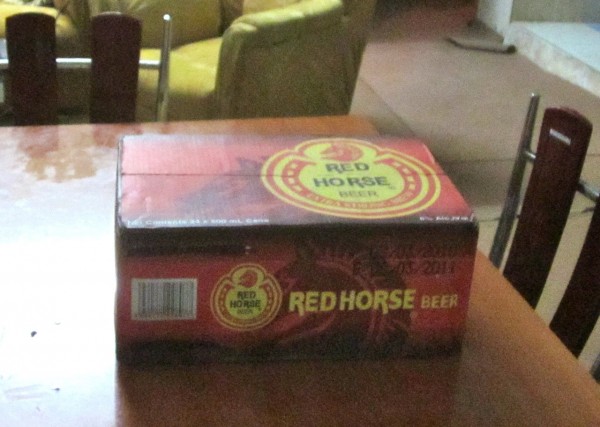
My company, CADG, pulled out of Zaranj after we completed the district irrigation projects but not before the Governor talked us into doing some work in Delaram which I’ll cover in a separate post because it was an interesting problem that involved a regimental commander who is now the Commandant of the Marine Corps. There was a big ceremony where excellent provincial manager, Bashir Ahmad Sediqi, and my company and USAID and the Marine Corps were all recognized with plaques and proclamations for delivering so much valuable aid to the province. I was the senior representative for my company, USAID and the Marines so I got a bunch of really cool swag which I had to surrender when I got back to Lashkar Gah. When we arrived at our compound that evening there was a case of Red Horse Beer waiting for us, an anonymous donation from the city fathers that was both unexpected and appreciated, but not a surprise given porous border just a mile away.


